Australian shoppers are struggling to keep up with the soaring cost of groceries
An old advertisement from Coles has resurfaced, exposing the staggering amount Aussie grocery prices have risen in just a few years.
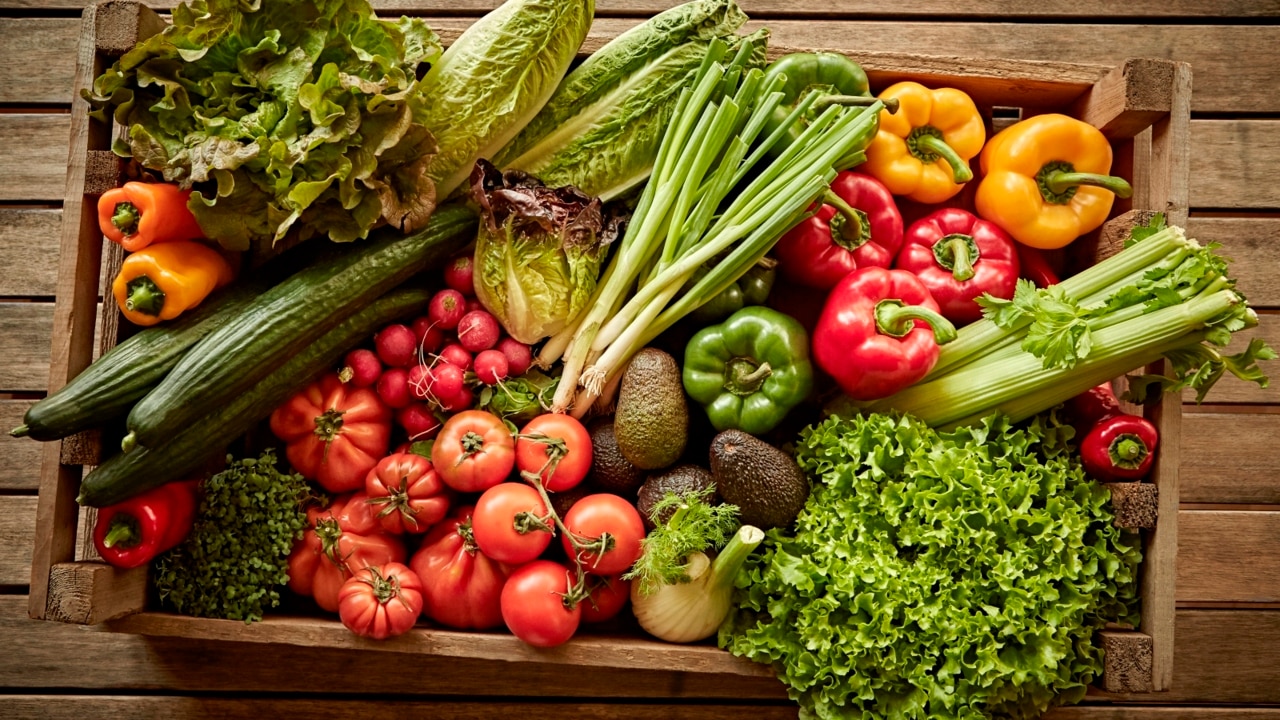
Lifestyle
Don't miss out on the headlines from Lifestyle. Followed categories will be added to My News.
As shoppers struggle under the soaring cost of groceries, an old Coles ad has resurfaced and highlighted just how different Aussies’ weekly shops look now compared to a few years ago.
Many Aussies will remember Coles’ ‘Feed Your Family’ campaign from 2017, which had celebrity chef Curtis Stone touting recipes that could feed a family of four for under $10.
Well, one TikTok creator has decided to revive the commercials, exposing the grim reality shoppers are now facing by comparing what $10 will actually get you today.
In one video, the creator @apostolucky bought a loaf of Helga’s Traditional Wholemeal bread for $4.90 and a jar of Nutella for $6.20, coming to a total of $11.10.
In another video the shopper grabbed a $9 pre-made sandwich and a $1.15 bottle of water and in another they simply grabbed a tin of Milo for $9.40.
A packet of two-minute noodles and a bag of Coles-brand shredded cheese came to $9.50, while a loaf of Coles high fibre white bread and a bottle of MasterFoods tomato sauce came to $7.30.
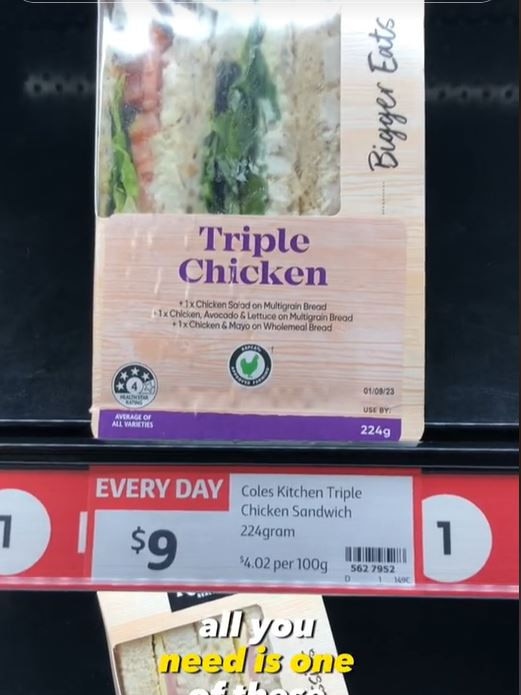
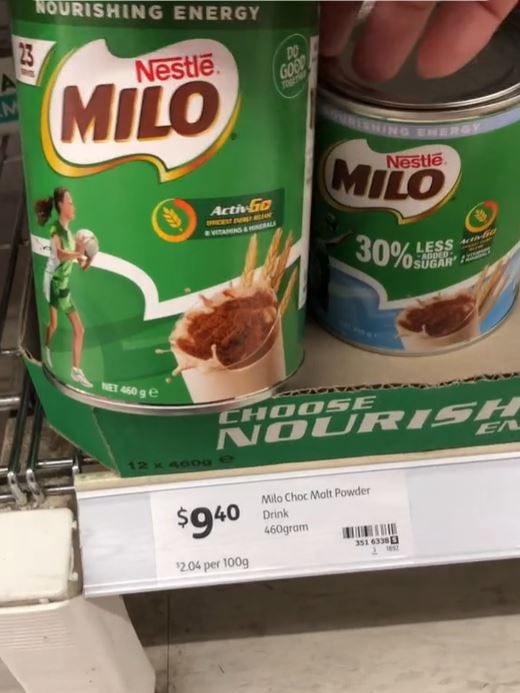
The TikToker even attempted to recreate one of the $10 recipes, comparing the cost of the ingredients for Stone’s Fettuccine Bolognese.
They bought pasta for $2.60, 500g of Coles mince for $9, a single brown onion, a bulb of garlic, two carrots and 300g of Coles brand sliced mushrooms for $6.50, which came to a total of $20.80.
Even if the pasta was swapped out for $1 Coles brand fettuccine it would come to well over $10 at $19.20.
The TikTok creator also noted that they did not include cheese, basil, condiments and the use of their electric stove in the final price.


The videos have struck a chord with Aussies, with many people revealing they have had to drastically change their grocery shopping habits.
One commenter claimed they “can’t afford” to eat meat now and instead their diet consists mostly of lentils, rice, and frozen veggies.
“I’m at uni and even the ‘uni meal’ staples like ramen noodles are outside my budget,” another wrote.
“Used to be able to feed, clothe, pay rent, utilities & save every week. I can no longer save & sit with blanket at night to keep heating costs down,” one commenter added.
A Coles spokesperson told news.com.au that the Feed Your Family for Under $10 promotion was “retired many years ago now”.
The supermarket said it has now moved to a “most cost per serve approach” to help customers with budgeting.
“This is integrated into recipes that we produce such as What’s for Dinner and the Inspire and Create that is featured in the Coles magazine and our online and social media channels,” the spokesperson said.
“Last week, we have launched our new ‘Great Value Hands Down’ campaign, bringing down the price of more than 500 products across Coles stores and Coles online.
“At a time when cost of living is adding pressure to Aussie families and their grocery budgets, Coles is making it easier by reducing the price of staple products customers buy most each week including breakfast, lunch, dinner, pets, cleaning and household products.”
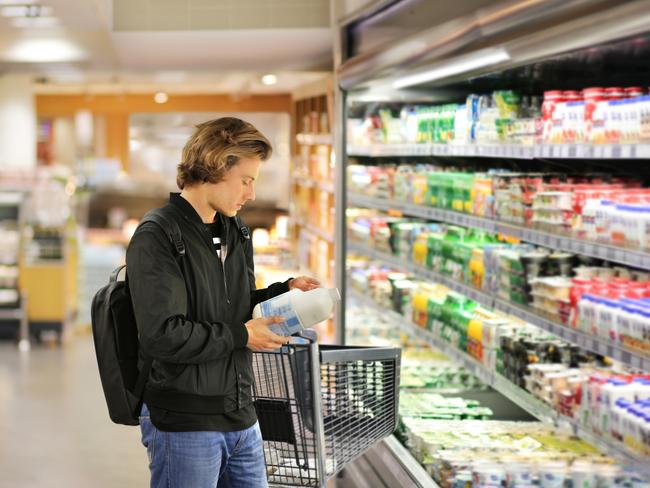
But it isn’t just Coles shoppers that are feeling the pinch, with prices soaring across all supermarkets.
A Woolworths spokesperson told news.com.au that the supermarket giant was “acutely aware” of the pressure being placed on Australian families through “cost of living increases, from housing to electricity and grocery inflation”.
They said the company was “doing more every day” to help shoppers “spend less” at Woolworths.
“That’s why we have more than 6000 weekly specials, and have dropped the price of 450 popular products,” the spokesperson said.
“Our Woolworths own brand products also offer great quality at competitive prices to help shopping budgets go further.”
Sarah Megginson, money expert at Finder, told news.com.au that the cost of “virtually everything” had risen.
“So many households are struggling with the cost of living crisis, with inflation pushing up prices of virtually everything from groceries and petrol to energy and insurance,” she said.
“Even the basics like cheese, milk and butter have soared in price – I know the simple home brand cheddar cheese block I buy has increased from $7 last year to $11 this year.
“So while supermarkets are posting record profits, families are being forced to change the way they shop just to keep food on the table.”
Both Coles and Woolworths recently announced their eye-watering profits, bringing in $1.1b and $1.6b respectively for the year.
Annual food inflation is sitting at 7.5 per cent for the June quarter, according to the Australian Bureau of Statistics (ABS).
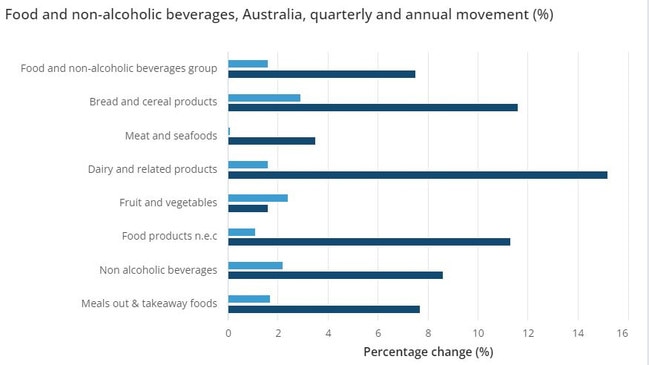
The data was revealed in the Consumer Price Index report June 2023 quarter, which found annual price increases were highest for dairy products, at 15.2 per cent, and bread and cereal products, at 11.6 per cent.
The increase was softer for fresh products, with the cost of meat and seafoods rising 3.5 per cent and fruit and vegetables increasing 1.6 per cent.
The cost of meals out and takeaway food saw a 7.7 per cent annual change, while non-alcoholic beverages jumped by 8.6 per cent.
Finder’s Consumer Sentiment tracker found the average Aussie household spent $188 a week on groceries in August 2023, an increase from $170 per week 12 months prior.
That is a $936 increase per household over a 12 month period.
Research also found a whopping 40 per cent of Aussies rank groceries as one of their top three most stressful expenses.
Ms Megginson said there are still some things shoppers can do to try and lower the cost of their weekly shop and “stretch your dollar a little further”.
“Do your best to stick to your shopping list and avoid stocking up on sale items unless you really need them,” she said.
“Those ‘end of the aisle’ discount buys are designed to entice you and they can offer great value, but only if you really need it.”
She noted that many retailers offer loyalty programs, saying Aussies may as well earn points on their spend if they are buying groceries anyway.
“Also consider changing your routine to shop around at farmers markets, fruit marts and discount retailers like Aldi,” Ms Megginson said.
“You do pay a premium for the convenience of doing all your shopping at one supermarket, so the savings can be really substantial.”
Originally published as Australian shoppers are struggling to keep up with the soaring cost of groceries





